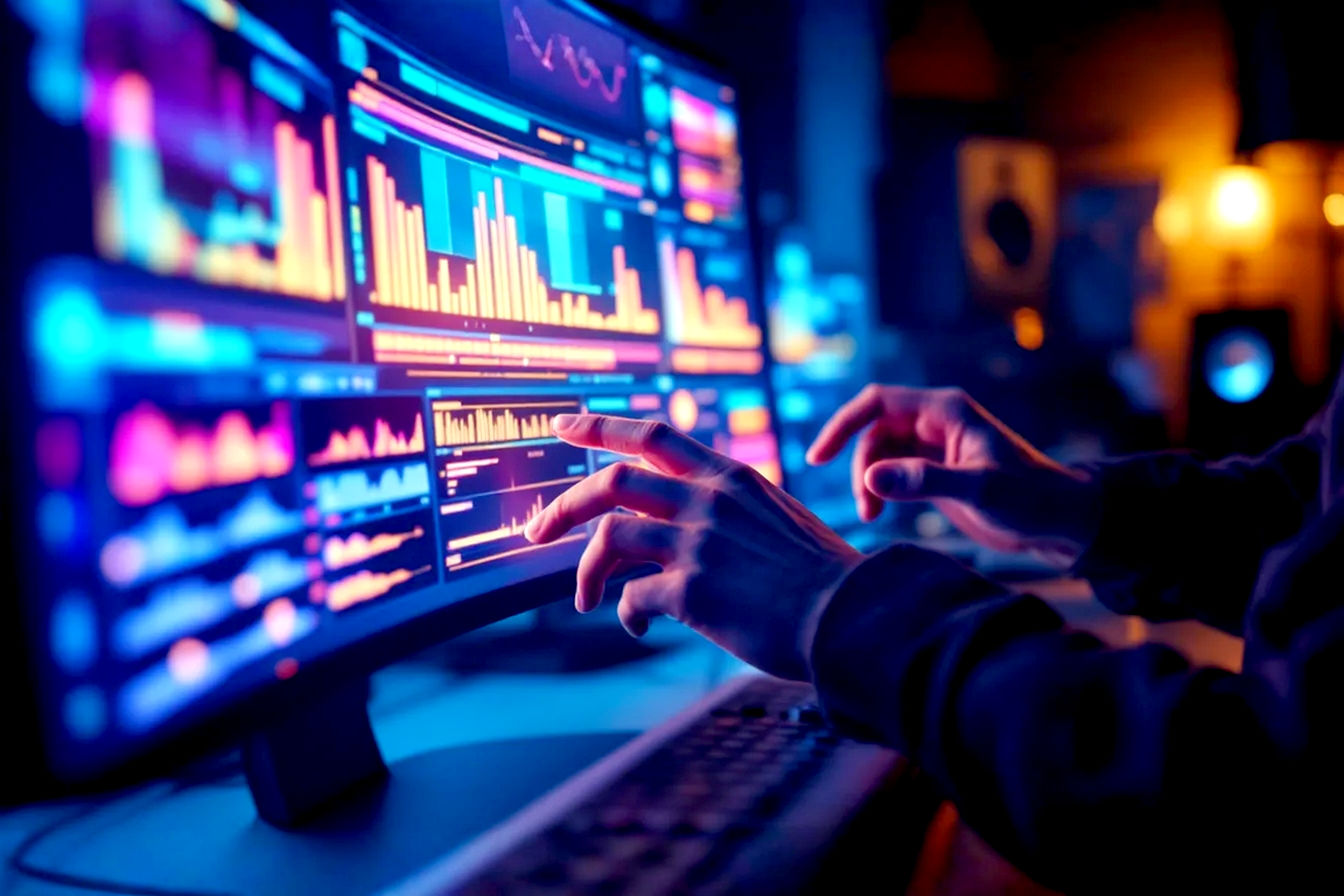This post may contain affiliate links. If you make a purchase through these links, we may earn a commission at no additional cost to you.
Artificial intelligence (AI) is rapidly changing how we create and interact with visual content. One of the most exciting developments in this space is the AI photo maker. These tools can generate stunning images from simple text prompts, enhance existing photos in ways previously unimaginable, or even create entirely new artistic styles. But with so much hype, a key question arises: Is an AI photo maker actually worth it?
This guide will dive deep into the world of AI image generation and editing. We’ll explore what these tools are, how they work, their significant advantages, and their potential drawbacks. We’ll also look at some of the top AI photo makers available in 2025 to help you decide if investing your time, and possibly money, into this technology is the right move for your creative or professional needs.
What Exactly is an AI Photo Maker? Demystifying the Technology
Before we can weigh the pros and cons, it’s important to understand what an AI photo maker truly is and the fascinating technology that powers it.
Defining an AI Photo Maker: More Than Just a Filter
An AI photo maker isn’t just another photo filter you might find on social media. It’s sophisticated software that uses artificial intelligence, particularly machine learning (ML) and deep learning, to create, modify, or enhance images. Unlike traditional photo editors like Adobe Photoshop or GIMP, which rely heavily on manual user input for complex tasks, AI photo makers can automate many processes and even generate entirely new visuals based on learned patterns and data.
These tools come in various forms:
- Text-to-image generators: You type a description (a “prompt”), and the AI creates an image based on it. For example, “a photorealistic image of an astronaut riding a horse on the moon.”
- Image-to-image transformers: You provide an input image and a prompt, and the AI modifies the image according to your instructions (e.g., changing the style, adding elements, or altering the scene).
- Style transfer tools: These apply the artistic style of one image (like a Van Gogh painting) to the content of another image.
- AI photo enhancers: These tools automatically improve image quality by upscaling resolution, reducing noise, sharpening details, or correcting colors.
- AI-powered editors: Many traditional editors are now incorporating AI features, like smart object selection, background removal, or generative fill (adding content seamlessly).
Essentially, AI photo makers leverage complex algorithms to “understand” and manipulate visual information in highly advanced ways.
How Do AI Photo Makers Work? A Look Under the Hood
The magic behind AI photo makers lies primarily in complex machine learning models, especially neural networks. Think of these as computer systems loosely inspired by the human brain, capable of learning from vast amounts of data.
The Role of Machine Learning and Neural Networks
Simplified Explanation: Imagine showing a child millions of pictures of cats. Eventually, the child learns to recognize a cat, even if it’s a breed they’ve never seen before. AI photo makers work similarly. They are “trained” on massive datasets containing billions of images and their corresponding text descriptions. This training allows them to learn the relationships between words and visual elements, like colors, shapes, textures, and even artistic styles.
Technical Explanation: Two main types of deep learning models have been pivotal in the rise of AI image generation:
- Generative Adversarial Networks (GANs):
- Concept: GANs involve two neural networks competing against each other. The Generator tries to create realistic images, while the Discriminator tries to distinguish between real images (from the training data) and fake images created by the Generator.
- Process: The Generator starts by producing random noise. It gradually learns to create more convincing images to “fool” the Discriminator. The Discriminator, in turn, gets better at spotting fakes. This adversarial process continues, pushing both networks to improve until the Generator can produce images that are often indistinguishable from real ones.
- Analogy: Think of it like an art forger (Generator) trying to create a perfect replica of a masterpiece, and an art expert (Discriminator) trying to detect the forgery. Each time the forger is caught, they learn from their mistakes and try to make a better forgery next time.
- Diffusion Models:
- Concept: Diffusion models have become increasingly popular and often produce state-of-the-art results, especially in text-to-image generation (like DALL-E 3 and Stable Diffusion). They work by gradually adding noise to an image until it becomes pure static, and then learning to reverse this process.
- Process:
- Forward Process (Adding Noise): The model takes a clear image and systematically adds small amounts of random noise over many steps until the original image is completely obscured.
- Reverse Process (Denoising): The AI is then trained to reverse this. Starting with random noise, and often guided by a text prompt, the model meticulously removes the noise step-by-step, gradually forming a coherent image that matches the prompt.
- Analogy: Imagine a sculptor starting with a rough block of marble (noise) and slowly chipping away pieces (denoising) to reveal a detailed statue (the final image), guided by a mental image or instructions (the text prompt).
Both GANs and diffusion models require immense computational power for training and often for generation, but they are the engines driving the current AI image revolution.
Training Data: The Foundation of AI Image Generation
The quality, diversity, and sheer volume of the training data are absolutely critical to an AI photo maker’s capabilities.
- Importance: If an AI is trained primarily on images of cats, it will be very good at generating cats but might struggle with dogs or cars. Large datasets, like LAION-5B (which contains over 5 billion image-text pairs), provide a broad understanding of many objects, scenes, and styles.
- Impact on Output: The more diverse and well-captioned the training data, the better the AI can understand nuanced prompts and generate accurate, high-quality images. If the data lacks diversity (e.g., few images of people from certain demographics), the AI may exhibit biases in its output.
- Potential Biases: This leads to a significant concern: AI models can inadvertently learn and perpetuate biases present in their training data. For instance, if historical image data predominantly shows doctors as men, an AI might be more likely to generate images of male doctors, even if the prompt is neutral. Researchers are actively working on ways to mitigate these biases.
Understanding this technological backbone is crucial for appreciating both the power and the limitations of AI photo makers.
The Alluring Upsides: Why AI Photo Makers Are Gaining Traction (Pros)
AI photo makers offer a compelling array of benefits that explain their rapid adoption across various fields and by individual users. These advantages are reshaping creative workflows and making visual content creation more accessible than ever.
Unprecedented Speed and Efficiency
One of the most significant pros is the dramatic increase in speed.
- Rapid Creation: Generating a unique image or applying a complex edit can take seconds or minutes with AI, compared to potentially hours or even days of manual work by a skilled artist or designer.
- Examples:
- A marketer can quickly generate several visual concepts for an ad campaign.
- A blogger can create custom featured images for articles in minutes.
- A game developer can prototype character designs or environments rapidly. This efficiency frees up valuable time, allowing creators to focus on higher-level strategy, refinement, or producing more content.
Accessibility for All Skill Levels
AI photo makers are democratizing visual creation.
- No Expert Skills Needed: You don’t need to be a Photoshop wizard or have a degree in graphic design to produce compelling visuals. If you can type a description, you can create an image.
- Empowering Non-Designers: This empowers small business owners, educators, students, and individuals who previously lacked the skills or resources to create custom graphics. Now, they can bring their ideas to life visually without a steep learning curve.
Cost-Effectiveness: Saving Time and Money
For many, the financial benefits are a major draw.
- Reduced Outsourcing Costs: AI can reduce or eliminate the need to hire professional photographers, illustrators, or graphic designers for certain tasks, especially for smaller projects or initial concepts.
- Free and Affordable Options: Many AI photo makers offer free tiers or are significantly cheaper than traditional design software licenses or freelance rates. While high-end professional use might still require investment, the barrier to entry is much lower.
Boundless Creativity and Experimentation
AI tools can act as a powerful catalyst for creativity.
- Unique Visuals: Generate entirely novel images and artistic styles that might be difficult or impossible to create manually. “A cat made of sushi, impressionist style” is just a prompt away.
- Explore Concepts: Quickly visualize different ideas, color palettes, and compositions without committing significant time to each one. This is invaluable for brainstorming and iterative design.
- Overcoming Creative Blocks: When inspiration runs dry, AI can provide a starting point or suggest unexpected visual directions, helping to break through creative ruts.
Automation of Tedious Editing Tasks
Many AI photo makers excel at automating repetitive and time-consuming editing jobs.
- Streamlined Workflows: Tasks like background removal, object removal, image upscaling to higher resolutions, noise reduction, and complex color correction can often be done with a single click or a simple prompt.
- Focus on Artistry: This allows photographers and designers to offload the grunt work and concentrate on the more artistic and strategic aspects of their projects.
Personalization and Customization
AI enables a high degree of personalization in visual content.
- Tailor-Made Images: Create visuals specifically designed for a particular audience, brand, or message. This could be personalized avatars for users, custom illustrations for a children’s book, or unique marketing visuals that resonate with a niche demographic.
- Adaptive Content: In the future, AI might even generate visuals that adapt in real-time to user preferences or contexts.
These advantages highlight why AI photo makers are not just a novelty but a transformative technology with practical benefits for a wide range of users.
The Potential Pitfalls: Understanding the Limitations and Concerns (Cons)
While the benefits of AI photo makers are compelling, it’s crucial to acknowledge their limitations and the serious concerns they raise. These tools are not perfect, and their use comes with responsibilities and potential downsides.
Quality and Realism Can Be Inconsistent
Despite rapid advancements, AI-generated images aren’t always flawless.
- Artifacts and “AI Weirdness”: Users often encounter strange anomalies, such as people with extra fingers, distorted faces, nonsensical text, or objects blending unnaturally. While models are improving, these “glitches” can make images unusable without further editing.
- Photorealism Challenges: Achieving true, convincing photorealism, especially for complex scenes with intricate details or specific human expressions, can still be difficult. AI might struggle with physics, lighting logic, or subtle cues that a human eye instantly recognizes.
- Prompt Dependency: The quality of the output is heavily reliant on the user’s ability to write effective prompts. Vague or poorly constructed prompts often lead to disappointing results. This “prompt engineering” is a skill in itself.
Ethical Dilemmas and Misuse Potential
This is perhaps the most significant area of concern. The power of AI image generation can be easily misused.
Deepfakes and Misinformation
- Realistic Fakes: AI can create highly realistic but entirely fabricated images and videos (deepfakes). These can be used to spread misinformation, defame individuals, create fake news, or perpetrate scams. The ease with which such content can be generated poses a serious threat to trust and truth.
Copyright and Intellectual Property Issues
- Ownership: Who owns an AI-generated image? The user who wrote the prompt? The company that developed the AI? The AI itself? Legal frameworks are still catching up with this technology.
- Training Data Concerns: Many AI models are trained on vast datasets of images scraped from the internet, which may include copyrighted material used without permission from the original artists or photographers. This has led to lawsuits and ongoing debates about fair use and compensation.
- “Style Of” Prompts: Generating images “in the style of” a living artist raises ethical questions about mimicking an artist’s unique work without their consent, potentially impacting their livelihood.
Bias in AI Algorithms
- Reflecting Societal Biases: As mentioned earlier, AI models can learn and amplify biases present in their training data. This can lead to the generation of stereotypical or discriminatory images related to gender, race, age, or other characteristics.
- Reinforcing Stereotypes: If an AI consistently produces biased imagery, it can reinforce harmful stereotypes and limit representation in visual media.
The “Human Touch” and Artistic Originality
There’s an ongoing debate about the artistic merit of AI-generated images.
- Art or Automation?: Can a machine truly create “art” if it lacks consciousness, emotion, or intent? While AI can produce aesthetically pleasing images, some argue they lack the depth and originality of human-created art.
- Devaluation of Human Skill: There are concerns that the proliferation of easily generated AI images could devalue the skills, time, and effort invested by human artists, photographers, and designers, potentially impacting their job market.
Learning Curve for Advanced Features and Prompting
While basic use can be simple, mastering AI photo makers requires effort.
- Beyond Simple Prompts: To achieve specific, high-quality results, users need to learn advanced prompt engineering techniques, including the use of negative prompts (specifying what not to include), understanding how different keywords influence the AI, and experimenting with various parameters.
- Platform-Specific Settings: Different AI tools have their own unique settings and parameters (e.g., CFG scale, steps, samplers, seeds in Stable Diffusion) that control the generation process. Learning these can take time and experimentation.
Computational Resources and Subscription Costs
Accessing the best AI capabilities isn’t always free or easy.
- Local Installations: Running powerful open-source models like Stable Diffusion locally requires a modern computer with a capable graphics card (GPU) and sufficient RAM, which can be a significant hardware investment.
- Subscription Fees: Many of the top-tier online AI photo makers operate on a subscription model or use a credit system. While often cost-effective compared to hiring professionals, these costs can add up, especially for heavy users.
Homogenization of Visual Styles
There’s a potential risk that widespread use of AI could lead to a certain sameness in visual content.
- Default Styles: If many users rely on default settings or popular, easily replicated styles, the internet could become flooded with images that share a similar “AI aesthetic.”
- Reduced Uniqueness: This could make it harder for brands or individuals to stand out with truly unique visual identities if they rely too heavily on generic AI outputs.
Understanding these cons is vital for making an informed decision and for using AI photo makers responsibly and effectively.
So, Is an AI Photo Maker Worth It for You?
The answer to whether an AI photo maker is “worth it” isn’t a simple yes or no. It highly depends on your specific needs, goals, resources, and how you weigh the pros against the cons.
Identifying Your Needs and Use Cases
Consider who you are and what you want to achieve:
- For Hobbyists and Casual Users:
- Pros: Great for fun, experimentation, creating unique social media posts, personalized gifts, or just exploring creative ideas without needing artistic skills. Many free options are available.
- Cons: Occasional weird results might not matter much. Ethical concerns about data are still relevant but might be less critical for non-commercial fun.
- Verdict: Likely worth it for entertainment and casual creation, especially with free tools.
- For Content Creators and Marketers (Bloggers, Social Media Managers, Small Businesses):
- Pros: Huge time and cost savings for generating blog post images, social media graphics, ad visuals, and concept mockups. Ability to create a high volume of diverse content quickly.
- Cons: Quality control is essential; “AI weirdness” can look unprofessional. Understanding copyright for commercial use is critical. Potential for style homogenization if not carefully directed.
- Verdict: Generally worth it, but requires careful selection of tools, attention to detail, and awareness of ethical/legal implications. Often best used as a starting point, followed by human refinement.
- For Artists and Designers:
- Pros: Can be a powerful tool for brainstorming, concept art, overcoming creative blocks, creating textures or backgrounds, or exploring new styles. Automation of tedious tasks frees up time for more creative work.
- Cons: Concerns about originality and the “human touch.” Potential for devaluing traditional skills if seen as a replacement rather than a tool. Copyright issues around training data and style imitation are particularly relevant.
- Verdict: Can be worth it as a supplementary tool in the creative process, not necessarily a replacement for human artistry. Requires a thoughtful approach to integration and ethics.
- For Businesses (Larger Companies, Agencies):
- Pros: Significant potential for streamlining workflows, reducing costs for large-scale visual content production (e.g., e-commerce product variations, marketing campaigns), and rapid prototyping.
- Cons: Brand consistency can be a challenge. Ethical sourcing of AI tools and data is crucial for corporate responsibility. Risk of deepfakes or misinformation impacting brand reputation if not managed.
- Verdict: Potentially very worth it for efficiency gains, but demands robust guidelines, ethical oversight, and integration with existing quality control processes.
Balancing Pros and Cons Based on Your Priorities
- When speed and cost are paramount: If you need visuals quickly and have a limited budget, the pros of AI photo makers often outweigh minor quality imperfections (which can sometimes be edited).
- When originality and ethical considerations are top priorities: If your work demands absolute originality, or if you have strong concerns about copyright or bias, you’ll need to be more selective with AI tools, perhaps using them sparingly or focusing on those with clearer ethical guidelines and data sourcing. You might also lean more towards using AI for ideation rather than final output.
Free vs. Paid: Making the Right Investment
- What can you achieve with free tools? Many free AI photo makers (like Bing Image Creator or the free tiers of services like NightCafe) are surprisingly capable for casual use, basic image generation, or experimentation. They are a great way to learn about prompting and see if AI image generation fits your workflow.
- When is it worth paying for a subscription?
- You need higher image quality, more consistent results, or higher resolution outputs.
- You require access to advanced features, more control over the generation process, or faster generation speeds.
- You need to generate a large volume of images regularly.
- You need commercial usage rights, which are often clearer with paid plans.
- You want access to the latest models and features, as these often debut in paid tiers.
Ultimately, “worth” is a personal calculation. Experiment with free tools first to understand their capabilities and limitations before committing to paid subscriptions.
Exploring the AI Photo Maker Landscape: Top Picks for 2025
The AI photo maker market is booming, with new tools and updates appearing constantly. Here are some of the leading options as of early 2025, categorized by their primary strengths:
For Text-to-Image Generation
These tools excel at creating images from textual descriptions.
Midjourney
- Strengths: Renowned for its highly artistic and often stunningly beautiful image outputs. It has a distinct, recognizable aesthetic that many users love. Midjourney is particularly good at creating imaginative, painterly, and atmospheric scenes. It has a very active and helpful community, primarily based on Discord.
- Considerations: It’s a paid-only service. The interface, which operates through Discord bot commands, can have a learning curve for new users, though many find it efficient once mastered.
- Technical Details: Midjourney uses its own proprietary AI models, which are continuously updated. It emphasizes aesthetic quality and user experience through its curated approach.
DALL-E 3 (via ChatGPT Plus, Copilot Pro, or API)
- Strengths: Developed by OpenAI, DALL-E 3 is exceptionally good at understanding and following complex prompts with multiple elements and specific details. Its integration with ChatGPT allows for conversational prompt refinement, making it easier to iterate and achieve desired results. It generally produces more photorealistic and literal interpretations compared to Midjourney’s often more artistic flair.
- Considerations: Access is typically through a subscription (like ChatGPT Plus or Copilot Pro) or via API usage, which incurs costs. There are usage limits, even with paid plans.
- Technical Details: DALL-E 3 is an advanced transformer model that builds upon its predecessors, focusing on improved prompt adherence and image coherence.
Stable Diffusion (and its variants like SDXL)
- Strengths: Its biggest advantage is being open source. This means anyone can download and run it locally on their own computer (if they have capable hardware), offering maximum control and privacy. It’s highly customizable, with a vast community developing and sharing custom models (checkpoints), extensions (like ControlNet for precise image control), and user interfaces (e.g., Automatic1111, ComfyUI). SDXL is a more powerful version offering higher resolution and detail.
- Considerations: Setting up and running Stable Diffusion locally has the steepest learning curve. The quality of output can vary significantly depending on the specific model, settings, and prompting skills. Online platforms offering Stable Diffusion provide easier access but may have limitations.
- Technical Details: Stable Diffusion is a latent diffusion model. Its open nature allows for deep customization, including training custom models on specific datasets or styles (e.g., LoRAs – Low-Rank Adaptations).
For AI Photo Editing and Enhancement
These tools use AI to improve or radically alter existing photographs.
Adobe Photoshop (with Generative Fill & AI features)
- Strengths: Photoshop is the industry standard for professional photo editing. Its integration of AI features, powered by Adobe Sensei, like Generative Fill (add, remove, or expand image content seamlessly using text prompts), Neural Filters (for complex adjustments like skin smoothing or style transfer), and improved selection tools, has made it even more powerful. These AI tools work within a familiar, robust editing environment.
- Considerations: It requires an Adobe Creative Cloud subscription, which can be costly. The software is comprehensive and can be overwhelming for beginners.
- Technical Details: Adobe Sensei is Adobe’s AI and machine learning framework, which underpins a wide range of intelligent features across its product suite.
Luminar Neo
- Strengths: Developed by Skylum, Luminar Neo is known for its user-friendly interface and powerful AI-driven tools designed for specific photo enhancement tasks. These include Sky AI (realistic sky replacement), Portrait Bokeh AI, Enhance AI, and tools for relighting scenes or removing power lines. It aims to simplify complex edits.
- Considerations: It can be purchased as a standalone application or used as a plugin for Photoshop and Lightroom. While powerful, some purists might prefer more manual control than its AI-centric sliders offer.
- Technical Details: Luminar Neo focuses on providing a suite of AI tools that automate common but often time-consuming photo editing tasks, making them accessible through intuitive controls.
Topaz Labs AI Suite (Gigapixel AI, DeNoise AI, Sharpen AI)
- Strengths: Topaz Labs offers a suite of specialized AI tools that are highly regarded for their performance in specific areas:
- Gigapixel AI: For upscaling images to significantly larger resolutions while maintaining or even enhancing detail.
- DeNoise AI: For removing noise from photos effectively without sacrificing too much detail.
- Sharpen AI: For intelligently sharpening blurry images.
- Considerations: These are often sold as individual applications or in a bundle. They can be resource-intensive and are more focused on image restoration and technical quality than creative generation.
- Technical Details: Each Topaz Labs tool uses specialized machine learning models trained for its specific task, often producing results superior to general-purpose denoisers or sharpeners.
Free and Freemium Options to Get Started
If you’re new to AI photo makers or have limited needs, these are great starting points:
Bing Image Creator (powered by DALL-E)
- Strengths: Offers free access to a version of OpenAI’s DALL-E model through Microsoft Bing search or Microsoft Copilot. It’s very easy to use: just type a prompt.
- Considerations: Requires a Microsoft account. You get a certain number of “boosts” (credits) for faster image generation per day/week; once used up, generation can be slower. Image customization options are limited compared to dedicated platforms.
Canva AI Image Generator
- Strengths: Canva has integrated an AI image generator (often based on Stable Diffusion or other models) directly into its popular, user-friendly design platform. This makes it incredibly convenient for adding custom AI-generated visuals to social media posts, presentations, or other designs created within Canva.
- Considerations: The free tier may have limitations on the number of generations or access to premium features. The level of control might be less granular than specialized AI art tools.
NightCafe Creator
- Strengths: NightCafe provides access to multiple AI generation methods, including Stable Diffusion and versions of DALL-E, VQGAN+CLIP. It offers a certain number of free credits daily, allowing users to experiment. It also has strong community features, including daily challenges and the ability to browse and be inspired by others’ creations.
- Considerations: The free credits might not be enough for extensive use. More advanced features, higher resolutions, or bulk creation typically require purchasing additional credits or a subscription.
This list is not exhaustive, as the field is constantly evolving, but it represents some of the most capable and popular choices available in 2025.
Getting Started: Tips for Using an AI Photo Maker Effectively
Once you’ve chosen an AI photo maker, here are some tips to help you get the most out of it and use it responsibly:
Mastering the Art of Prompt Engineering
The quality of your AI-generated images heavily depends on the quality of your prompts. This is often called prompt engineering.
- Be Specific and Descriptive: Instead of “a dog,” try “a fluffy golden retriever puppy playing in a field of sunflowers, photorealistic, golden hour lighting.” The more detail you provide, the better the AI can understand your vision.
- Use Keywords for Style, Artist, Lighting, Composition:
- Style: “impressionist painting,” “sci-fi concept art,” “vintage photo,” “pixel art.”
- Artist: “in the style of Van Gogh,” “inspired by Ansel Adams” (be mindful of ethical considerations with living artists).
- Lighting: “cinematic lighting,” “soft morning light,” “dramatic studio lighting,” “neon glow.”
- Composition: “wide-angle shot,” “close-up portrait,” “bird’s-eye view,” “rule of thirds.”
- Experiment with Negative Prompts: Many tools allow you to specify what you don’t want in the image (e.g., “negative prompt: blurry, ugly, deformed hands”). This helps refine the output and avoid common AI artifacts.
- Iterate and Refine: Your first prompt rarely yields the perfect image. Treat it as a starting point. Modify your prompt, add or remove keywords, and regenerate. Small changes can have big impacts.
Understanding Key Parameters and Settings
Many AI photo makers offer settings that allow you to fine-tune the generation process:
- Aspect Ratio: The width-to-height ratio of your image (e.g., 16:9 for widescreen, 1:1 for square, 9:16 for vertical phone screens).
- Resolution/Image Size: The dimensions of the output image in pixels. Higher resolution means more detail but often takes longer to generate and may cost more credits.
- Steps (Sampling Steps): In diffusion models, this refers to the number of denoising steps the AI takes. More steps can lead to more detail and coherence but also increase generation time. There’s often a point of diminishing returns.
- CFG Scale (Classifier-Free Guidance Scale): This setting controls how strictly the AI adheres to your prompt. A lower value gives the AI more creative freedom (potentially straying from the prompt), while a higher value forces it to follow the prompt more closely (which can sometimes make images feel “overbaked” or less natural).
- Seed: A number that initializes the random noise from which the image is generated. Using the same seed with the same prompt and settings will produce a very similar or identical image. This is useful for reproducing results or making small iterative changes.
The availability and naming of these parameters can vary between tools.
Ethical Usage: Best Practices to Follow
With great power comes great responsibility.
- Be Transparent: When appropriate, disclose if an image is AI-generated, especially in contexts where it might be misleading (e.g., news reporting, realistic-looking portraits of non-existent people).
- Avoid Creating Harmful Content: Do not use AI photo makers to create deepfakes for malicious purposes, spread misinformation, generate hate speech, or create non-consensual explicit content.
- Respect Copyright and Intellectual Property: Be mindful of copyright laws. Avoid generating images that directly infringe on existing copyrighted works. Understand the terms of service of the AI tool you are using regarding commercial rights and ownership of generated images.
- Consider Bias: Be aware that AI models can reflect biases from their training data. Critically evaluate the images you generate and consider if they are perpetuating stereotypes. Try to guide the AI towards more inclusive representations if needed.
Combining AI Tools with Traditional Editing
AI photo makers don’t have to be an all-or-nothing solution. They often work best when integrated into a broader creative workflow.
- AI for Ideation: Use AI to quickly generate concepts or rough drafts.
- AI for Specific Tasks: Employ AI for tasks like background removal, upscaling, or adding specific elements.
- Refine with Traditional Tools: Take the AI-generated output into software like Photoshop, GIMP, or Affinity Photo for manual adjustments, color correction, compositing, or adding text and graphics. This combination often yields the most professional and polished results.
The Future of AI in Image Creation: What’s Next?
The field of AI image generation is evolving at an astonishing pace. Here are some trends and potential future developments:
Advances in Realism and Control
- Improved Understanding: AI models will likely get even better at understanding complex prompts, physics, lighting, and subtle human expressions, leading to more consistently realistic and coherent images.
- Fine-Grained Control: Expect more intuitive and precise tools for controlling specific elements within a generated image (e.g., “make the cat’s eyes blue,” “change the character’s pose”) without needing complex prompt re-engineering. 3D-aware generation might become more common.
AI Video Generation
- Text-to-Video: The technology behind text-to-image is rapidly being extended to video. Tools like OpenAI’s Sora, RunwayML Gen-2, and Google’s Lumiere are already showing impressive capabilities in generating short video clips from text prompts. This will likely become more accessible and sophisticated.
Integration into More Tools and Workflows
- Ubiquitous AI: AI-powered image creation and editing features will likely become standard in a wider range of software, from professional design suites to everyday productivity apps and social media platforms.
- Seamless Workflows: The integration between different AI tools and traditional software will likely become smoother, allowing for more fluid creative processes.
Evolving Ethical Frameworks and Regulations
- Ongoing Debate: Discussions around copyright, ownership, deepfakes, and bias will continue.
- Potential for Regulation: We may see the development of new laws, industry standards, or technological solutions (like content authenticity watermarks) to address the ethical challenges posed by AI-generated media. This is crucial for building trust and mitigating misuse.
The future is likely to bring even more powerful, accessible, and integrated AI tools for visual creation, further transforming how we imagine and produce images and videos.
Conclusion: Is an AI Photo Maker a Worthwhile Tool in Your Creative Arsenal?
So, we return to our central question: Is an AI photo maker worth it?
As we’ve seen, AI photo makers offer a powerful suite of advantages: incredible speed, accessibility for non-designers, cost savings, boundless creative potential, and automation of tedious tasks. They are democratizing image creation and opening up new possibilities for individuals and businesses alike.
However, these tools also come with significant drawbacks and concerns: inconsistent quality at times, the serious ethical implications of deepfakes and misinformation, unresolved copyright issues, potential for algorithmic bias, and the ongoing debate about artistic originality.
Ultimately, the “worth” of an AI photo maker is highly subjective and depends on your individual needs, goals, and ethical considerations.
- For quick content generation, brainstorming, or personal enjoyment, they can be incredibly valuable, especially the free or low-cost options.
- For professional artists and designers, they can be a powerful assistant, automating mundane tasks and offering new avenues for inspiration, though not a complete replacement for human skill and vision.
- For businesses, they can offer significant efficiency gains, but require careful management of quality, brand consistency, and ethical implications.
AI photo makers are undeniably transformative. They are not a fleeting trend but a fundamental shift in how visual content is created. Like any powerful tool, their value lies in how thoughtfully and responsibly they are used. The best approach is often to view them as collaborators rather than replacements—tools that can augment human creativity and efficiency.
We encourage you to experiment with some of the tools mentioned, start with free options, and form your own opinion. By understanding both their capabilities and their limitations, you can decide if an AI photo maker is a worthwhile addition to your creative or professional toolkit in 2025 and beyond.






